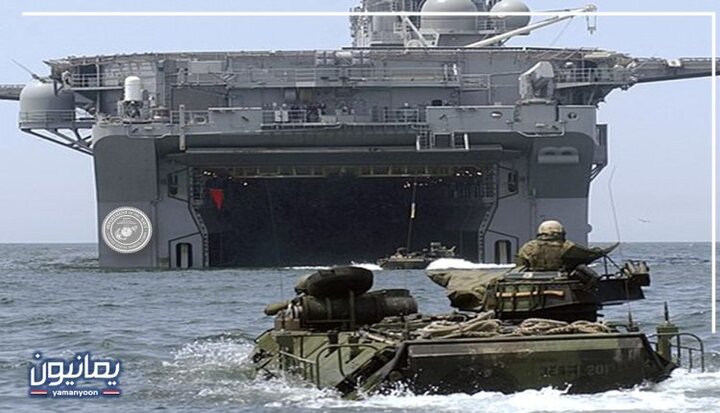U.S. Marines: Naval Forces Worldwide Should Learn from the Yemenis

The U.S.Marine Corps Association reported that Yemen’s operations in the Red Sea offer exceptional lessons in operational innovation and unconventional tactics. Despite lacking advanced naval or air power, Yemeni forces have successfully challenged the U.S. naval fleet and imposed notable costs on it.
The report states that Yemeni forces have forced American commanders to reconsider customary maritime deterrence strategies. This acknowledgment goes beyond a field assessment; it carries broad strategic implications and reflects a shift in military power concepts applied by Yemen’s navy against the U.S. Navy.
Operational Innovation Without massive Resources
Yemen’s experience proves that innovation in naval operations does not require advanced weaponry or large fleets but rather a flexible tactical mindset. Yemen relies on small drones,low-cost missiles,and light boats for precise,repeated attacks. These relatively simple yet effective methods have compelled the U.S. Navy to rethink its conventional approach to deterrence, demonstrating that technological superiority alone is insufficient.
A notable example is Yemen’s frequent use of drones targeting American vessels, disrupting maritime operations and increasing counter-threat costs significantly. These actions show how a less-equipped navy can impose heavy financial and material burdens on the U.S. Navy and its international allies, keeping American forces constantly alert and driving the development of new defensive strategies.
Flexibility and Adaptability in a Complex War Environment
The Yemeni forces’ ability to adapt rapidly to changing conditions includes flexible target selection and timing during attacks. Strikes frequently enough originate from scattered coastal areas using small boats for simultaneous and unexpected assaults-tactics that confuse U.S. fleets and force rapid operational adjustments.
This adaptability highlights Yemeni capabilities for quick battlefield analysis exploiting vulnerabilities within the U.S. Navy fleet structure. Their operations also demonstrate that tactical flexibility combined with continuous learning is essential for success – outweighing fleet size or weapon types used.
Strategic Impact on American Naval Power
This admission carries significant strategic consequences for American forces: neither fleet size nor advanced technology alone guarantees maritime dominance anymore; instead, operational innovation, rapid responsiveness, and exploiting tactical opportunities have become critical factors for any navy’s supremacy.
Yemen’s experience confirms that innovative thinking can alter power balances even against the world’s strongest navies. It underscores how cost-effective tools can achieve substantial impact against technologically superior adversaries-a qualitative shift reshaping modern naval warfare understanding-and compels America to reassess its training methods, equipment policies, and also maritime deterrence doctrines.


